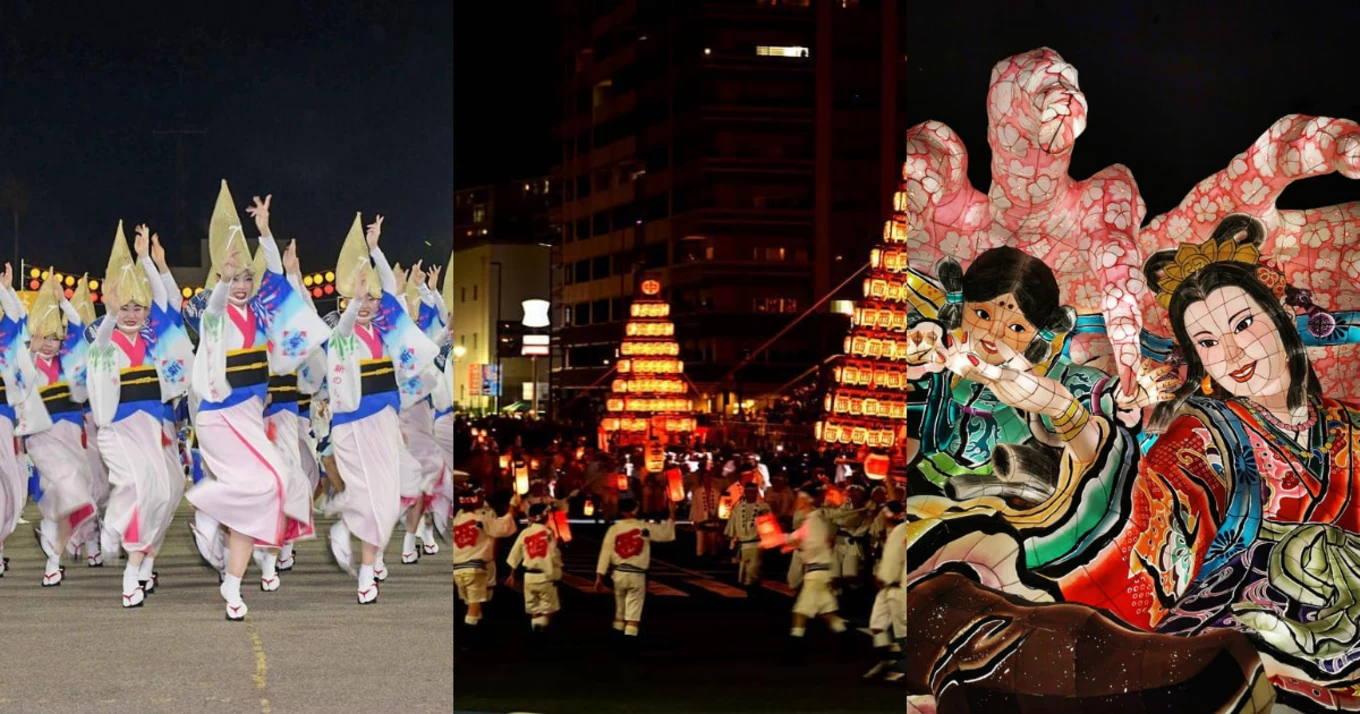Japan has so many quirky and wonderful things that encourage millions of visitors from around the world to travel there each year. One of its most unique features is its reputation for the most out-of-this-world and unparalleled experiences that are only available in Japan.
Throughout the year and across all parts of the country, tradition holds strong and some festivals that have been running for hundreds of years continue to be held annually. Here are some of the weirdest and most wonderful festivals held during the warmer months.
1. Kanamara Matsuri Penis Festival
Jumping right into the downright bizarre, the Kanamari Matsuri Penis Festival may look like a trashy hen’s party from the outside, but its symbolism runs deeper than that.
The origins of this festival can be traced back to the 1600’s (waaaaay before plastic penis straws were a thing) and were originally held as a way to fend off sexually transmitted infections. The shrine where the temple is held also used to be the place of prayer for sex workers looking to divine intervention for protection against STIs.
In modern times, the Kanamari Matsuri Penis Festival acts as a fundraiser for HIV-related charities. Expect to see more penis paraphernalia at this event than the naughty corner of a $2 shop!
This festival is held on 5 April 2020 at Kanayama Shrine, Kawasaki.
2. Naki Sumo / Nakizumo – the crying baby festival
Can you imagine a more surreal image than dozens of babies being held by sumo wrestlers urging them to cry the longest and loudest simply by pulling faces at them? Well, this silly notion becomes reality at the 400-year-old Naki Sumo festival held in Tokyo each year.
Akin to the Chinese tradition of loud and scary dragons scaring away evil spirits, the crying baby festival follows the idea that the babies’ wailings will keep bad luck away.
The rules are simple: the first baby to cry, wins. The wrestlers can use only non-torturous methods such as donning masks or chanting at the babies to cry in order to gain the desired result. No babies are harmed in the making of this spectacle!
This festival is held on 26 April 2020 at Sensoji Temple, Tokyo.
If the crying babies knock you off your feet, sit back and relax in a rickshaw ride around Asakusa. You’ll take in the sights of this historic area, including Sensoji Temple and the Kaminarimon Gate in a tour ranging from half an hour to a full two hours!
3. Matsumoto Frog Festival
One of the more peculiar festivals you can visit in Japan, the Matsumoto Frog Festival is run in honour of the mascot of the street it is held on, Nawate Street. Held over two days in June, the weather will be perfect for wearing open-toad shoes and enjoying a nice cold croak-a-Cola.
In all seriousness, you can hop along to the different stalls lining the street to try frog-shaped foods, pick up a frog temporary tattoo and enjoy ribbet-ing performances that parade along the with the crowds.
This festival is held around mid-June 2020 at Nawate Street, Matsumoto.
The best way to get around Matsumoto is on the hop-on hop-off bus (no pun intended, I swear!), which allows you to travel throughout the town – including right by Nawate Street – with one prepaid ticket.
4. Obon Festival
Obon Festival serves as a time for the living to remember their deceased ancestors. It is also believed that during this time, the spirits of those who are being remembered return to their loved ones.
To guide the spirits back, paper lanterns (chochin) are hung and Obon dances are performed to the beat of taiko drums. Other traditions include families visiting the graves of their relatives, leaving food offerings at altars and temples and staging family reunions.
Due to many Japanese people travelling around the country to visit their friends and family, Obon week can be one of the busiest times to travel, although the festival is observed during different times at different regions, depending on what is thought to be the 7th month of the year.
This festival is celebrated throughout the country from either 13 July or 13 August. To help you travel around, you can pre-purchase a JR pass, which is convenient and cost-efficient.
5. Tobata Gion
First celebrated around 200 years ago, Tobata Gion was originally a ceremony of thanks to Suga-o-Mikami (one of the two major gods thought to have created Japan) for ridding the land of a deadly illness that had swept the country.
In modern times, festival-goers will marvel at the morphing of the flags on the yamagasa (a large pyramid-shaped float) into lanterns, turning the 10-metre-tall, 2.5-tonne structure into a glowing beacon.
This festival is held on 24 July 2020 throughout the Tabata Ward, Kitakyushu.
6. Hokkai Heso Matsuri – Belly Button Festival
The origins of the Belly Button Festival are so pure. Furano City, where the festival is located, is considered to be the ‘belly button’ of the greater area of Hokkaido. In 1969 the festival was conceptualised as a way to unify the widespread population and to “strengthen bonds through the belly button”. Cute, right?
While there are plenty of fun and fabulous activities going on, the highlight has to be the Belly Button Dance Competition in which approximately 4,000 dancers participate over the two days of festivities. The aim of the competition is pretty simple: paint a big face on your belly and dance ‘til your heart’s content.
This festival is on 28 and 29 July 2020 in Furano, Hokkaido.
While you’re in the area, why not go from a mid-point to a high point with an aerial view of Furano from a hot air balloon, complete with breakfast.
7. Aomori Abuta
Aomori Abuta is kind of like the Macy’s Thanksgiving Parade on steroids and with a Japanese twist. Every night of the festival, two dozen enormous lantern floats are paraded down the street, accompanied by dancers keeping time to the beat of the taiko drums. The floats are usually made to represent historical and mythical figures, gods and popular TV characters.
On the final night of the festival, a little bit of crowd participation is involved (uh-oh!) and the floats are pushed in and around the audience, followed by a troupe of musicians. The public’s involvement is very much encouraged, and visitors should purchase a traditional haneto dancing costume at a local store, so they blend in.
For those who require (or just want) a seat, tickets can be pre-purchased.
This festival is from 2 to 7 August 2020 in Aomori’s CBD.
8. Awa Odori
Woohoo! A Festival dedicated entirely to dance. If you fancy yourself as quite the dancing queen, you won’t want to miss this celebration that takes place in conjunction with the Obon Festival, held in Tokushima during August.
This is serious business. Between 6 and 10:30 pm each night of the event, streets are blocked off to allow hundreds of dancers, from the amateur to the professional, to perform the “Fool’s Dance” while dressed in yukata (cotton robes).
This festival is from 13 to 15 August 2020 in Downtown Tokushima.
9. Robot Restaurant
If the aforementioned festivals don’t really tickle your fancy or they just don’t fit your itinerary, but you want to get a feel for the colour and joy modern Japanese culture brings, a visit to Tokyo’s Robot Restaurant will hit the spot.
Part bar, part theatre, Robot Restaurant will take you on a technicoloured journey through time. Or maybe it’s space? Nobody knows for sure, but what we do know is that you will never have seen anything like it and possibly won’t again!
Don’t just take our word for it. Pre-purchase your ticket and experience it for yourself!
There’s no better way to fully immerse yourself in Japanese culture than by joining one of the many cute and quirky festivals. Which one will you choose?
Want more crazy?!
What is Klook?
Klook is a world-leading travel activities and services booking platform, covering over 400 destinations and over 100,000 travel services! Klook’s mission is to empower travellers around the world to discover, book and experience the best things to do anywhere, anytime - including attractions, activities, car rental, tours, local transfers, wifi and SIM cards.
🧡 Stay in the loop with Klook ANZ on the following channels:















![[Updated] Complete List Of Official Nationwide MCO SOP 2021](https://res.klook.com/image/upload/fl_lossy.progressive,q_85/c_fill,w_160,h_104/v1633858858/blog/iso56uzsphmdguixkvzh.webp)





![[Updated] Complete List Of Official Nationwide MCO SOP 2021](https://res.klook.com/image/upload/fl_lossy.progressive,q_85/c_fill,w_410,h_264/v1633858858/blog/iso56uzsphmdguixkvzh.webp)







